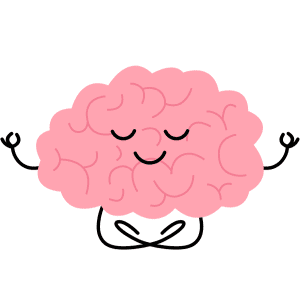How to encourage mindfulness in the workplace
Sometimes things run smoothly at work. Nothing can get us off balance. We feel good and are in the flow. But there are also phases when nothing seems to work. In these moments, mindfulness at work can help you to become aware of your thoughts and feelings and to be able to concentrate better on your everyday work.
When you practice mindfulness, you will become more confident in your abilities. You will learn how to manage conflicts more easily and how to better divide up or delegate your tasks. You will become more creative and enjoy your job more again. In addition, it pays to be more mindful at work. After all, mistakes can only be avoided if we are mindful.
The Benefits of Mindfulness in the Workplace

1. Stress Reduction: Mindfulness helps employees manage stress, leading to improved mental health and a more relaxed work environment.
2. Increased Productivity and Focus: Mindfulness enhances concentration, leading to higher levels of productivity and fewer errors.
3. Enhanced Emotional Regulation: Mindfulness fosters emotional intelligence, which has a positive impact on workplace relationships and conflict resolution.
4. Better Work-Life Balance: Mindfulness encourages a healthier work-life balance, reducing burnout and enhancing overall well-being.
5. Improved Organizational Culture: Bringing mindfulness into your workplace culture creates a positive and supportive work environment, enhancing employee satisfaction and retention.
How to be mindful

Just breathe deeply and focus your attention on your breath. Come back to yourself. Afterwards, you will immediately go to work much more concentrated and make fewer mistakes. This little mindfulness training will make you more attentive to your work. Consciously take a break whenever you notice that stressful situations cause you to make mistakes or that you feel unfocused and irritable. Simply take a break!
Mindfulness in meetings
Mindfulness at work is especially important in a meeting. Listen carefully when someone says something. Are you unfocused? Then mindfulness exercises can help you train your perception. Notice how often your thoughts wander and what you are thinking about. Write this down on a notepad. In the next meeting, you will then notice more quickly when you drift off and you will be able to concentrate better on your work or the meeting in the future. Your work colleagues will also feel more valued if you give them your full attention.
Encouraging Mindfulness in the workplace
ONE MINUTE OF MEDITATION

At any time of the day sit down, close your eyes and focus on the sound of your breath. If you are stressed or have a challenging emotion, you can inhale through your nose and exhale through your mouth, while concentrating on the sensations and the sound of your breath. Include formal meditation sessions with the entire work team, so you will see how over time your employees begin to incorporate this practice naturally.
ACTIVE BREAKS
It is now known that spending long hours in front of the computer can have catastrophic consequences for individuals, as it can wear out their muscles and joints. Active breaks are a great alternative to mobilize the body, focus the mind or perform a mindfulness exercise.
It is generally recommended to take 3 to 4 active breaks of at least 10 minutes, thus ensuring that daily tasks are carried out with greater attention and more productively.
Train your employees with us and develop their emotional skills.
MINDFUL EATING

If you want to implement it in your company, we recommend that you allow workers to choose their meal times, create specific spaces where they can eat and incorporate healthy options in your company’s canteens.
CREATE A COMFORTABLE SPACE
Cubicles are probably the last thing you think of when you envision serenity – but why can’t you make your cubicle an escape? Personalize it with pictures from your last oh-so-relaxing beach vacation or set up a lamp with a warm-colored bulb to drown out the stark fluorescents overhead. Some personal and comforting touches in your workspace will help you feel more connected to your surroundings.
Try Short Mindfulness Exercises At Your Desk
There are apps for guided breathing and quick meditations. Or maybe it’s a mantra you can incorporate into your thoughts and actions at work every day. T
The concept of mindfulness at work is here to stay and it has much to offer. Any initiative that improves positivity, focus and concentration among employees has to be a worth a try, right? Use the office intranet to spread the word about the value of mindfulness. A staff body that isn’t necessarily convinced of the benefits may need persuading with lots of evidence and video testimonials from individuals and companies that have successfully introduced mindfulness. And while you’re at it why not showcase some of the mindfulness techniques by publishing on the intranet how-to videos for meditation and breathing exercises.
In addition, a follow-up intranet survey or poll can be used to assess the success of the mindfulness program by canvassing staff views. With its all-staff coverage, the intranet is the perfect platform for promoting the message about the value of mindfulness at work.





